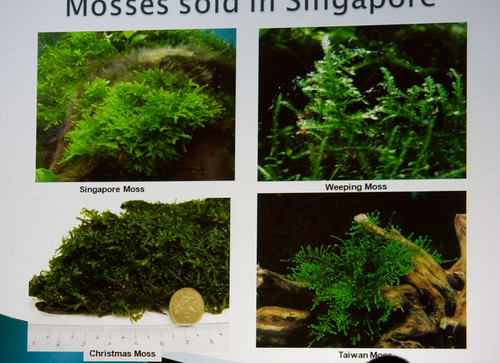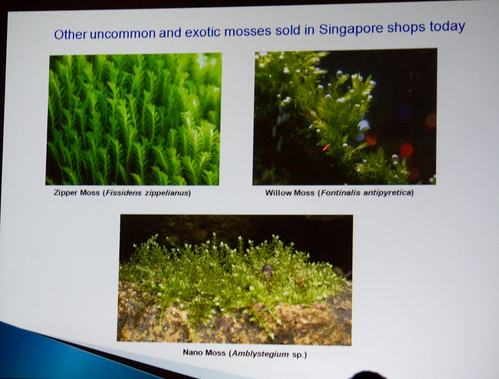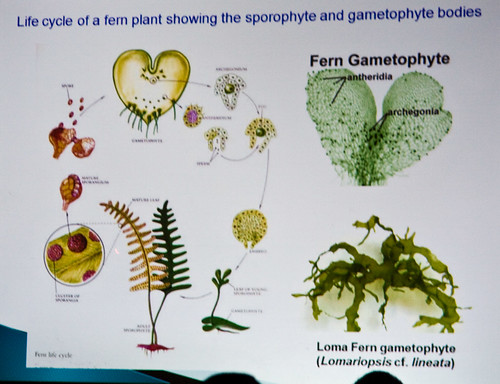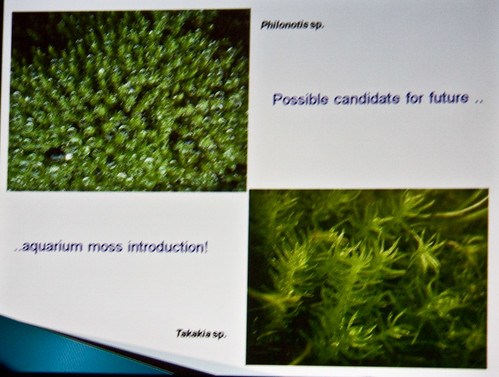AGA 2008: Benito Tan: Aquatic Mosses
November 17th, 2008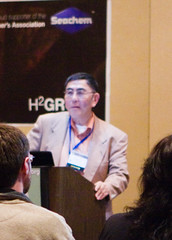 Benito Tan gave a fascinating talk at the 2008 AGA Convention about aquatic mosses. One of the really nice things about Dr. Tan, is that he seemed to be somewhat familiar with both the scientific side of mosses, as well as, their application in the aquarium hobby. This allowed him to tailor the talk to exactly what a room full of 200 hobbyists wanted to hear.
Benito Tan gave a fascinating talk at the 2008 AGA Convention about aquatic mosses. One of the really nice things about Dr. Tan, is that he seemed to be somewhat familiar with both the scientific side of mosses, as well as, their application in the aquarium hobby. This allowed him to tailor the talk to exactly what a room full of 200 hobbyists wanted to hear.
He started his presentation detailing why it’s so difficult to identify mosses, and aquatic mosses in particular. Most aquatic mosses only grow their sexual growth under water. This means that your best guess at identifying them is by placing them under a light microscope so that you can look at cell structure, leaf shape, and branching patterns. Still, many times you still can’t be sure without the non-sexual growth of the moss.
Dr. Tan then described how Java Moss has been called many things in the hobby since it was introduced. Again, many of these problems stem from the inability of hobbyists to correctly identify mosses, especially when they can look different under different growing conditions. He also talked about a number of mosses currently being sold in Singapore.
He’s just recently started using DNA to try to identify various mosses, but described how even DNA presents its challenges. He said that DNA can almost always help you figure out an unknown moss’ genus, but you may still have to rely on more traditional methods to then determine the species. The reason for this, is that there are not enough known indicators for moss DNA to key on to find exact matches.
Dr. Tan also talked about a liverwort, Subwassertang, that’s been making its way throughout the hobby. What was most surprising is that despite its resemblance to Pellia, it is actually not a liverwort at all. In fact, Subwassertang is really a fern gametophyte that’s missing the female sex organs so it never matures to become an actual fern.
He’s done some research on the gametophyte, and believes that it is a fern from the Lomariopsis genus. What’s most peculiar, however, is that this type of fern is actually a branch climber, that lives entirely in trees. He doesn’t know why that type of fern would have an aquatic gametophyte for reproduction. Below is a picture of what the terrestial fern would likely look like.
Dr. Tan ended his presentation with a rather enticing slide with two aquatic mosses that he believes would make great additions to the hobby. Privately, when I asked him if he thinks they will actually make it into the hobby, he said that it’s only a matter of time.
Another one of my most anticipated talks, Dr. Benito Tan gave an excellent and informational presentation. In addition, he also had a sharp sense of humor, which aided him during his talk. And for everyone that see’s terrestial mosses on the forest floor, and tries to put them in the aquarium, Dr. Tan urges you to stop drowning mosses, for he’s in favor of a “Cruelity to Mosses” society to champion their right to live undisturbed. A great speaker, and a great talk.
